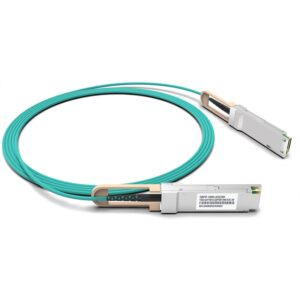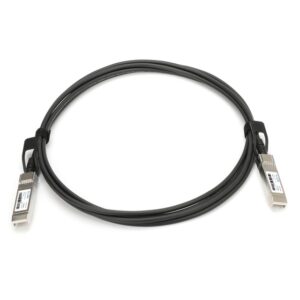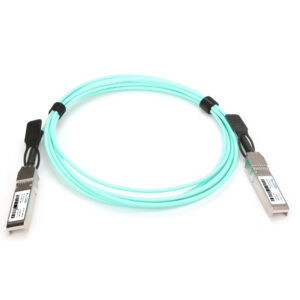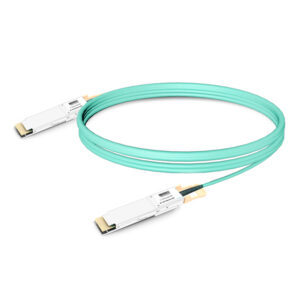Inside the Structure of Active Optical Cables (AOC)
When evaluating high-speed interconnect solutions, many data center managers and network engineers ask: what exactly is inside an active optical cable (AOC)? Understanding the internal structure of active optical cables helps in making informed choices for performance, durability, and long-term reliability.
What Is an Active Optical Cable?
An active optical cable (AOC) is a transmission medium that integrates optical transceivers and fiber optic cable into a single, plug-and-play solution. Unlike traditional optical transceivers paired with patch cords, an AOC cable comes as a factory-terminated unit, reducing the risks of contamination and simplifying deployment.
Key Components of AOC Cables
The internal structure of AOC cables is carefully engineered to deliver high-speed data transmission with minimal loss. The major parts include:
1. Optical Fiber
At the core lies multimode optical fiber, typically OM3 or OM4. This fiber transmits light signals at 850 nm wavelength, supporting 10G, 25G, 40G, or even 100G data rates over distances ranging from a few meters to 100 meters.
2. Transceiver Modules
Each end of the cable integrates miniature optical transceivers. These modules contain:
Laser diodes (Tx): Convert electrical signals into optical signals.
Photodiodes (Rx): Convert optical signals back into electrical signals.
Driver and receiver ICs: Ensure proper amplification, modulation, and decoding.
This integration eliminates the need for separate optical modules, reducing cost and complexity.
3. Control and Management Electronics
Within the transceiver housing, there are low-power integrated circuits responsible for signal integrity, digital diagnostics monitoring (DDM), and equalization. These ensure error-free transmission even in high-density environments.
4. Fiber Protection and Cable Jacket
The optical fiber is surrounded by aramid yarn (Kevlar) for tensile strength, plus a protective outer jacket. This construction gives the AOC cable flexibility while maintaining durability in rack-to-rack or switch-to-server connections.
5. Connector Housing
Standardized connector interfaces, such as SFP+, QSFP+, or QSFP28, allow seamless connection with networking equipment from different vendors.
Why the Internal Design Matters
The integrated structure of active optical cables offers several advantages:
Consistent quality due to factory pre-assembly.
Lower power consumption compared to copper DAC.
Lightweight and easy to install in dense data center racks.
Reduced maintenance, since the optical connectors are sealed.
These features make AOC cables a preferred choice in cloud computing, high-performance computing (HPC), and enterprise data centers.
FAQ snippets
An AOC integrates short multimode optical fiber, miniature transceiver modules at each end (laser diodes, photodiodes, and driver/receiver ICs), control and equalization electronics (for signal integrity and diagnostics), tensile-strength material (e.g., aramid yarn), and a protective outer jacket with standardized connector housings (SFP+/QSFP+ etc.).
No — AOCs are factory-terminated, fully integrated assemblies and are not designed for field termination or repair; defects are usually handled via replacement under warranty.
Follow manufacturer bend-radius and pull-force guidelines, avoid sharp bends and excessive stress on connector housings, route cables in ways that prevent kinks, and keep connectors clean before insertion.
Swap the cable with a known good unit, inspect connectors for damage, check host port LEDs and logs, confirm link negotiation settings, and use DDM diagnostics if available to check optical/electrical parameters.
AOC cables are engineered for data center environments with high MTBF figures and long service life when handled properly; lifespan depends on operating conditions, but quality assemblies from reputable manufacturers are rated for years of continuous operation.
Fibrecross and Quality Assurance
At Fibrecross, every AOC cable is designed with strict quality control, ensuring stable performance and compatibility with major brands like Cisco, Arista, Dell, and Juniper. By paying attention to the internal structure, we deliver products that combine reliability, efficiency, and long service life.





